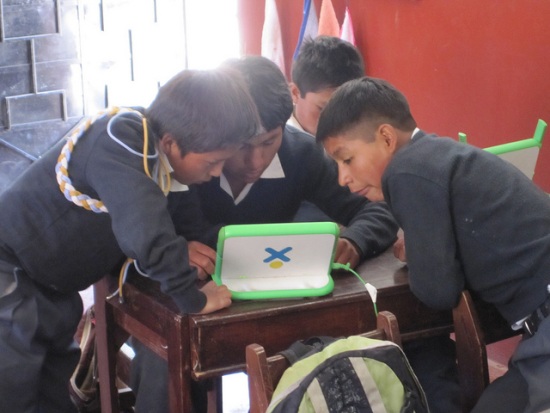(Editor's Note: Over the past 2 weeks we have provided you with different views on IDB's ongoing evaluation of Peru's OLPC project and the many discussions around it by Oscar Becerra and Marta Voelcker. Now when we saw this blog post by Eugenio Severín and Julián Cristiá from the IDB's education blog we immediately thought that it was a great complement to the aforementioned perspectives. Thanks to Eugenio for kindly allowing us to re-publish their post here.)

Artículo en español en el blog del BID
We have recently published a Working Paper and a Policy Note presenting the results of the impact evaluation of the "One Laptop per Child" program in Peru, developed by the IDB in collaboration with the Peruvian government itself. Since this is the first large-scale experimental evaluation that has been done in the world, it has stirred up expectations, but can offer important lessons on how to implement programs that provide students with computers and what kinds of results we can expect from such programs.
It is very important to commend the efforts of the Peruvian government for doing a serious evaluation of this program, and for sharing their results so transparently. It is a fact that there are few impact evaluations on the use of technology in education. Therefore, any contribution of knowledge helps support the efforts of many countries in the region and the world that are working to improve educational conditions for children that technologies can provide.
These are our results. First, the program has drastically reduced the digital divide, allowing many students and teachers, even in remote areas, to have access to laptops and educational content. Second, positive results were found in cognitive skills tests. The applied tests sought to measure reasoning abilities, verbal fluency, and processing speed in children. The very results are important, as they have been shown to be predictors of academic and work performance. The results indicate that children who received a laptop got ahead by 5 months of what the natural progression would have been in the development of these skills when compared to children who did not receive a laptop. Third, after 15 months of implementation, we found no statistically significant differences between children in beneficiary schools and children in control schools on learning outcomes measured by standardized tests of mathematics and language. No differences were found in relation to school enrollment and attendance.
The evaluation, adherent to its purpose, has identified important areas and opportunities to strengthen the program, so as to optimize its impact in the future. Primarily, the study's findings suggest identifying and developing a solid pedagogical model, which frames the educational use of computers in schools and classrooms, and proposes that innovative educational practices that take advantage of available technologies be used. Consistently, from this design, the study recommends a need to strengthen teacher training and ensure access to quality educational resources explicitly aligned with the learning objectives.
It is too early to propose definitive conclusions about this particular program, and more broadly, about the One-to-One strategy in which every student has a computer to support his or her learning. The experiences may be very different given the contexts and additional actions that are carried out. For example, Uruguay has implemented a One-to-One model universally in public elementary schools and a recent study from the Universidad de la República found positive impacts on learning. There are also experiences in the use of specialized software that have generated measurable improvements in various countries such as India, Ecuador, and Chile. This assessment, based on the specific experience in Peru so far, aims to contribute to the understanding of contextual characteristics that facilitate the development of One-to-One programs, the implementation components that should be considered to improve their impact, and above all, of the organizational and management conditions to facilitate their implementation.
This first experimental evaluation of a One-to-One program can be a contribution to the design and implementation of relevant policies in the region. It can open the door for new research, and provide us with a deeper understanding of the conditions and elements that permit One-to-One programs improve the quality of education. The potential of technology to enhance educational offerings through better learning resources, new educational practices and new learning spaces, is available for innovative educational projects in the region focused on improving quality. Learning from each effort is a fundamental condition of success.

